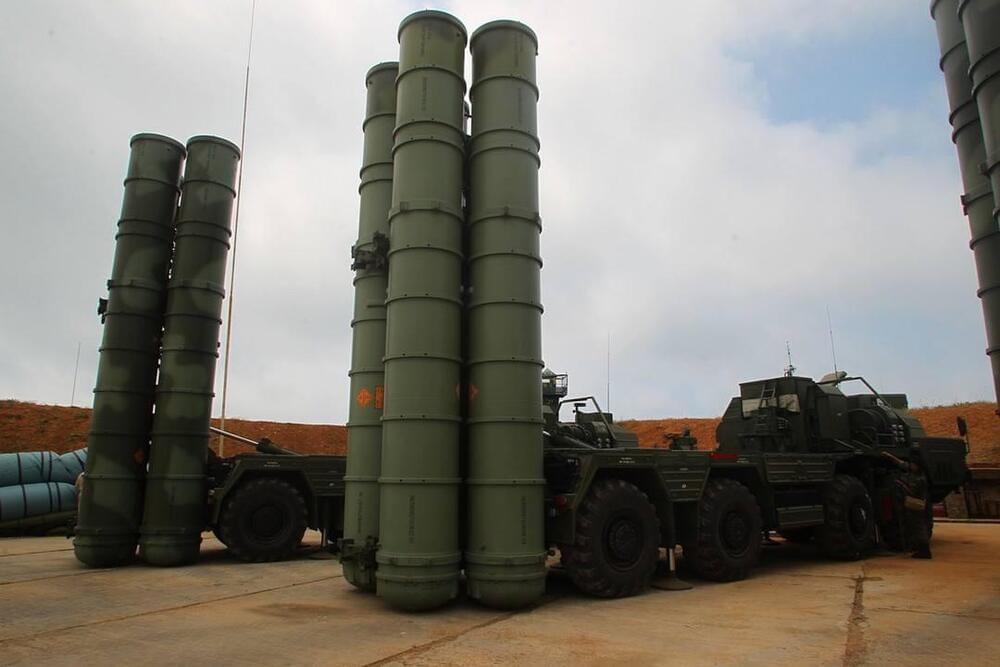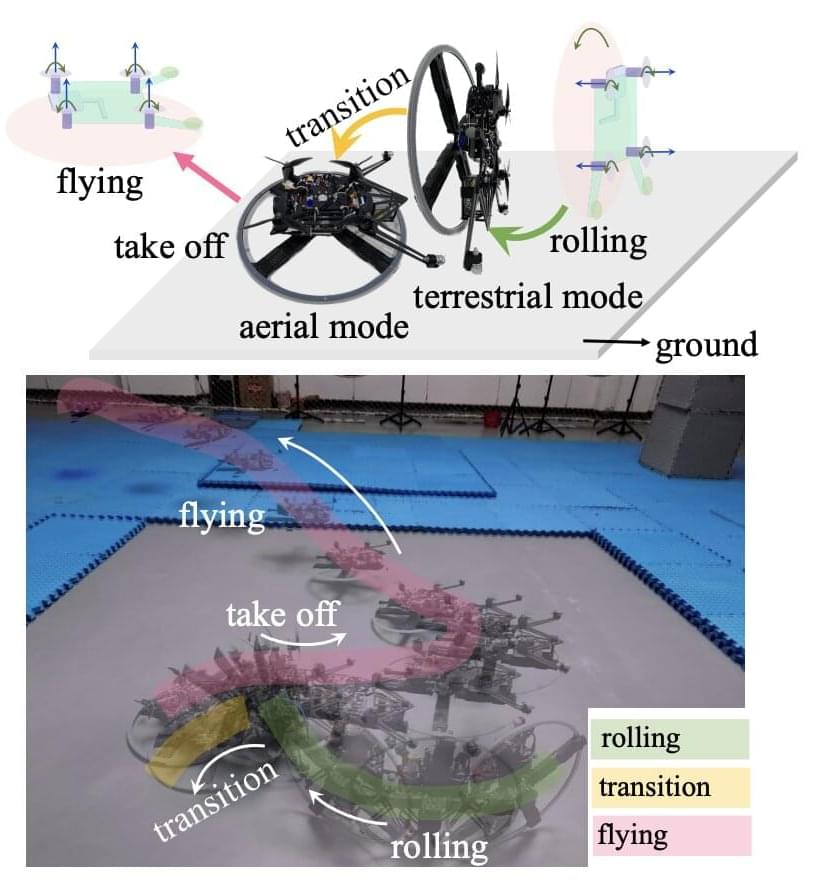Both advocates and critics of generative AI have compared it to the atom bomb. Here’s where that comparison breaks down.



Antibiotic resistance is a major public health threat, ranked as one of the top 10 by the World Health Organization. Every year, in the United States alone, nearly 3 million people are infected by drug-resistant bacteria and fungi, resulting in the death of around 35,000. While antibiotics are crucial in treating infections, overuse has led to the development of antibiotic-resistant strains of bacteria. These infections pose a significant challenge to treatment.
Now, Professor John E. Moses of Cold Spring Harbor Laboratory (CSHL) has developed a new weapon to combat drug-resistant superbugs – an innovative antibiotic that has the ability to shape-shift by rearranging its atoms.
Moses came up with the idea of shape-shifting antibiotics while observing tanks in military training exercises. With rotating turrets and nimble movements, the tanks could respond quickly to possible threats.
https://youtube.com/watch?v=A-On5P61sRQ&feature=share
The matter of the Chinese spy balloon that flew across the United States in February this year refuses to die down. A media house has reported that the balloon gathered intelligence from several US military sites and transmitted it back to Beijing in real-time. Beijing had said at the time that the balloon was a weather ship blown astray and entered the US airspace by mistake.
#spyballoon #china #us.
About Channel:
WION The World is One News examines global issues with in-depth analysis. We provide much more than the news of the day. Our aim is to empower people to explore their world. With our Global headquarters in New Delhi, we bring you news on the hour, by the hour. We deliver information that is not biased. We are journalists who are neutral to the core and non-partisan when it comes to world politics. People are tired of biased reportage and we stand for a globalized united world. So for us, the World is truly One.
Please keep discussions on this channel clean and respectful and refrain from using racist or sexist slurs and personal insults.
Check out our website: http://www.wionews.com.

In 1942 The Manhattan Project was established by the United States as part of a top-secret research and development (R&D) program to produce the first nuclear weapons. The project involved thousands of scientists, engineers, and other personnel who worked on different aspects of the project, including the development of nuclear reactors, the enrichment of uranium, and the design and construction of the bomb. The goal: to develop an atomic bomb before Germany did.
The Manhattan Project set a precedent for large-scale government-funded R&D programs. It also marked the beginning of the nuclear age and ushered in a new era of technological and military competition between the world’s superpowers.
Today we’re entering the age of Artificial Intelligence (AI)—an era arguably just as important, if not more important, than the age of nuclear war. While the last few months might have been the first you’ve heard about it, many in the field would argue we’ve been headed in this direction for at least the last decade, if not longer. For those new to the topic: welcome to the future, you’re late.
Machine learning has been leveraged to accelerate analysis in nuclear processing facilities and investigations in the field.
Surprise nuclear attacks or threats will soon be a thing of the past. Researchers at the Department of Energy’s Pacific Northwest National Laboratory (PNNL), U.S., have developed new techniques to accelerate the discovery and understanding of nuclear weapons by leveraging machine learning.
One enticing application of these new techniques in national security is to use data analytics and machine learning to monitor several ingredients used to produce nukes.
Play EVE Online: https://eve.online/Ridddle_EN
In this video, we explore the fascinating prospects of humanity becoming a proper interstellar civilization, up to Type III on the Kardashev scale. However, this transition process presents our species with a bunch of physical limitations, as well as societal and even biological implications. Many of them are quite unwanted or even ugly! We explore this vast topic by using the latest scientific models as well as the best science fiction worlds from books, TV shows, and even games. Speaking of which, to help us visualize this space-faring future with much-needed scale and fidelity, we turned to CCP Games — the creators of the massively multiplayer online game EVE Online. https://eve.online/Ridddle_EN. It is set in a rich sci-fi universe, where players can create their own character and explore a vast and complex virtual world built according to the well-thought set of consistent in-world rules The game is known for its intricate economy, politics, and warfare mechanics, where players can engage in a variety of activities, including mining resources, trading, building structures, and participating in battles. Quite frankly, the game feels like a real simulation of all those future endeavors humanity will face on the way to becoming a true interstellar species!
Tapping The Power Of The Stars — Dr. Andrea Kritcher Ph.D., Lawrence Livermore National Laboratory, U.S. Department of Energy.
Dr. Andrea (Annie) Kritcher, Ph.D. is a nuclear engineer and physicist who works at the Lawrence Livermore National Laboratory (https://www.llnl.gov/). She is the design lead of the HYBRID-E capsule technology within Lawrence Livermore’s Inertial Confinement Fusion (ICF) program, and is a member of the ICF leadership team and lead designer for shot N210808, at their National Ignition Facility, a recent experiment that heralded a significant step towards a fusion break-even target. She was elected Fellow of the American Physical Society in 2022.
Dr. Kritcher was first employed at Lawrence Livermore as a summer intern in 2004, as an LLNL Lawrence Scholar during her time at UC Berkeley, where she earned a master’s degree and doctorate in nuclear engineering, and as a Lawrence postdoctoral fellow in 2009 following completion of her Ph.D. During her postdoctoral appointment she explored using X-rays to measure the properties of warm and hot dense matter (plasma), and measuring how nuclei interact with dense plasma.
In 2012, Dr. Kritcher became a member of scientific staff and now serves as team lead for integrated implosion modeling and is a group leader within the design physics division at LLNL.
Lawrence Livermore National Laboratory (LLNL) is a federally funded research and development center in Livermore, California, United States. Originally established in 1952, the laboratory now is sponsored by the United States Department of Energy. Its principal responsibility is ensuring the safety, security and reliability of the nation’s nuclear weapons through the application of advanced science, engineering, and technology. The laboratory also applies its special expertise and multidisciplinary capabilities towards preventing the proliferation and use of weapons of mass destruction, bolstering homeland security, and solving other nationally important problems, including energy and environmental needs, scientific research and outreach, and economic competitiveness.

Russia cannot meet its arms delivery commitments to India because of its ongoing invasion of Ukraine, according to the Indian Air Force (AIF).
The statement, aired during a parliamentary committee meeting earlier this week, was the first official confirmation from New Delhi of Moscow’s defense export shortfalls.
It confirmed speculation that Russia’s defense industry is experiencing serious problems producing military supplies.

Unmanned aerial vehicles (UAVs), also known as drones, can help humans to tackle a variety of real-world problems; for instance, assisting them during military operations and search and rescue missions, delivering packages or exploring environments that are difficult to access. Conventional UAV designs, however, can have some shortcomings that limit their use in particular settings.
For instance, some UAVs might be unable to land on uneven terrains or pass through particularly narrow gaps, while others might consume too much power or only operate for short amounts of time. This makes them difficult to apply to more complex missions that require reliably moving in changing or unfavorable landscapes.
Researchers at Zhejiang University have recently developed a new unmanned, wheeled and hybrid vehicle that can both roll on the ground and fly. This unique system, introduced in a paper pre-published on arXiv, is based on a unicycle design (i.e., a cycling vehicle with a single wheel) and a rotor-assisted turning mechanism.

We had a wonderful group of international and interdisciplinary speakers at Saint Mary’s University on March 31 to April 1, 2017. They all took time out from their very busy schedules to come to Halifax to discuss robots and artificial intelligence at the Cyborg Futures Workshop. Academics from literary theory, digital culture, anthropology, sociology, environmental studies, robotics, and evolutionary biology, along with students and the public, convened for a lively discussion about technologies that are impacting us all.
This workshop is part of a larger SSHRC-funded project–Where Science Meets Fiction: Social Robots and the Ethical Imagination–that is about shifting the conversation about robots and AI, which has been animated by fiction but dominated in the real world by the military and industry. Opening the discussion up to wider social and cultural contexts–from the impact of technology on human relations; to non-human animals, the environment and trash; to racism, imperialism and misogyny; to automation, labour and capitalism; to killer robots and the military; to the problematic collapse of science and fiction—this workshop considered both the infrastructure currently being laid that is forcing us down a troubling path and imaginative alternatives to it. What follows cannot possibly do justice to the richness and complexity of the talks, so please click on the hyperlinks to listen to them.